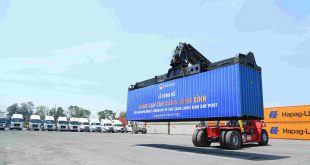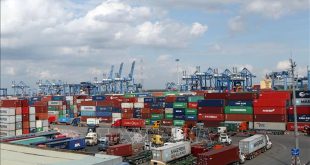The southern province of Ba Ria-Vung Tau is striving to become an international logistics hub – manned by world-class logistics services centres.
To realise the potential of its ports, Ba Ria-Vung Tau aims to become a world-class logistics hub
Seated on international marine routes, Ba Ria-Vung Tau has favourable conditions to develop seaports, port services, and a logistics sector that can handle increased shipping traffic. In light of expansion in trade and logistics services, Ba Ria-Vung Tau considers logistics to be a key industry for the years to come.
The province currently has 57 planned seaports – including 28 ports in use – with the registered investment capital totalled $2 billion, and an annual capacity of 98.9 million tonnes. In the Cai Mep-Thi Vai port complex, there are 35 port projects, of which 17 are operational, with a total annual capacity of 93 million tonnes, according to the provincial people’s committee.
In the last five years, the Cai Mep-Thi Vai port complex has attracted a higher number of large container vessels. Goods exported from Cai Mep-Thi Vai ports are shipped directly to the United States, Europe and to other countries and territories around the world via transit ports.
The complex handles 20 turn-arounds of 80,000 deadweight tonnes (DWT) vessels weekly, including an average of two vessels with loading capacities of 160,000DWT. Most of the container terminals at Cai Mep-Thi Vai have the investment capital of over VND27 trillion ($1.21 billion) each, with annual loading capacities of 6.8 million twenty-foot equivalent units (TEU).
Despite modern seaport systems, the cargo volume through the provincial ports has increased 16 per cent annually over the past five years. The local authorities said that they had not made the most efficient use of Cai Mep-Thi Vai mainly because of insufficient roads inside the port complex. Road 965 is the only route that connects to National Highway 51, and to roads leading to industrial parks near the complex.
To spur infrastructure development, Ba Ria-Vung Tau is seeking capital resources to construct Phuoc Hoa-Cai Mep road, new 991B road, as well as inter-port roads leading to Ben Luc-Long Thanh expressway and Nhon Trach industrial park of the neighbouring Dong Nai province. Construction of other routes, such as railways and Bien Hoa-Vung Tau expressway, are being fast-tracked to connect Cai Mep-Thi Vai with several neighbouring provinces.
In a recent meeting with the province’s leaders, Deputy Prime Minister Trinh Dinh Dung emphasised the significance of Cai Mep-Thi Vai to Vietnam’s socio-economic development. He urged the Ministry of Transport and Ba Ria-Vung Tau to boost activities in Cai Mep-Thi Vai, by overcoming limitations of zoning, connectivity, and transport infrastructure.
Cai Mep-Thi Vai now handles vessels of up to 160,000DWT, so it has great potential to become a competitive international freight transit centre. To reach the target, the province needs to rev up efforts to enhance logistics services without delays at the port, Dung stressed.
Since the effectiveness of the port remains low, Ba Ria-Vung Tau is mobilising all necessary resources to stimulate the logistics hub’s development. The province is calling for investment in logistics and warehouse planning, completing infrastructural development, and improving customs procedures at Cai Mep-Thi Vai.
In addition, Ba Ria-Vung Tau is proritising the development of the 800 hectare Cai Mep Ha logistics service centre, which boasts a deep seaport with an area of about 100 hectares and a berth length of 1,800 metres. The specialised logistics centre will receive vessels of above 100,000DWT. The province is holding a contest to find ideas for a 1/200-scale zoning plan for the Cai Mep Ha logistics centre.
As outlined in a master zoning plan for south-east seaport development through 2020 with a vision towards 2030, Ba Ria-Vung Tau will be home to the national seaport complex and international gateway port. The output of cargo through the local ports is expected to reach around 101.6 million tonnes per year by 2020, and hit 133.2 million tonnes per year by 2025.
Source: VIR
Source: Source: VIR
 Vietnam Seaports Association
Vietnam Seaports Association




